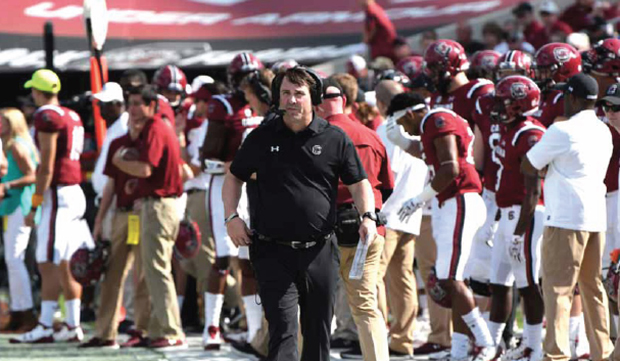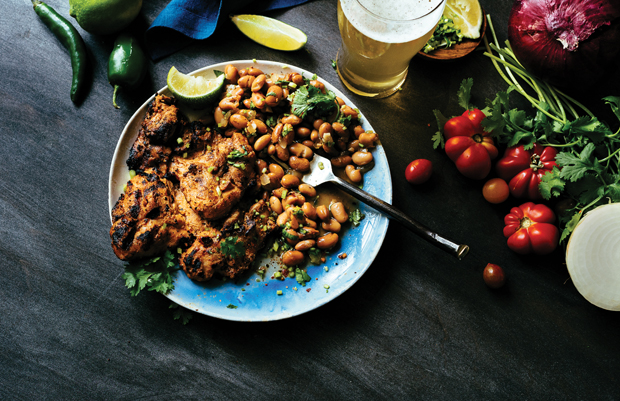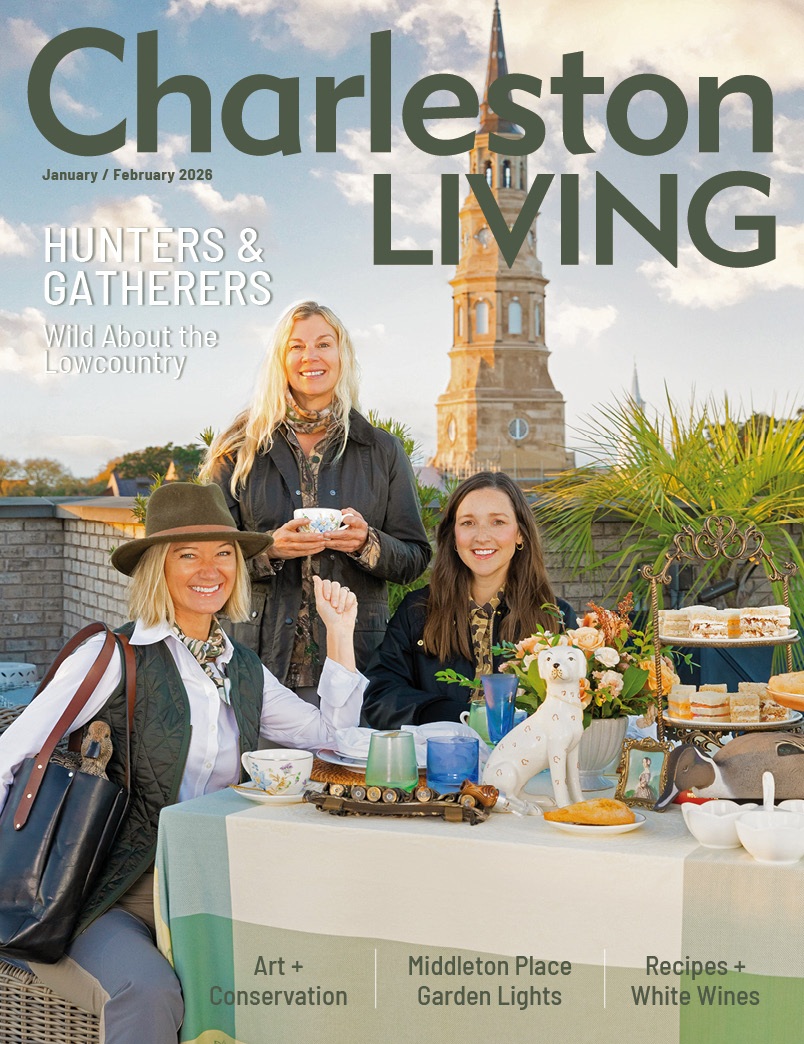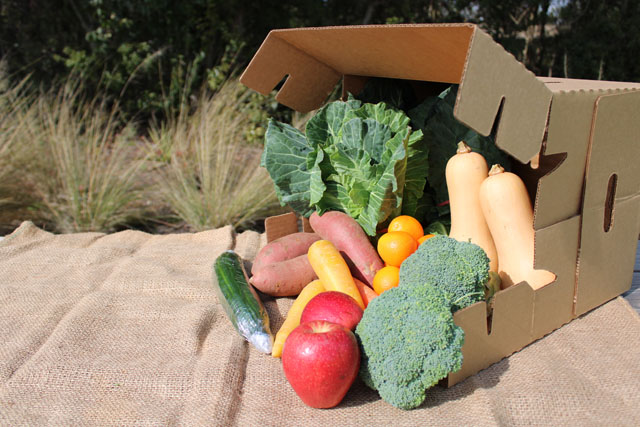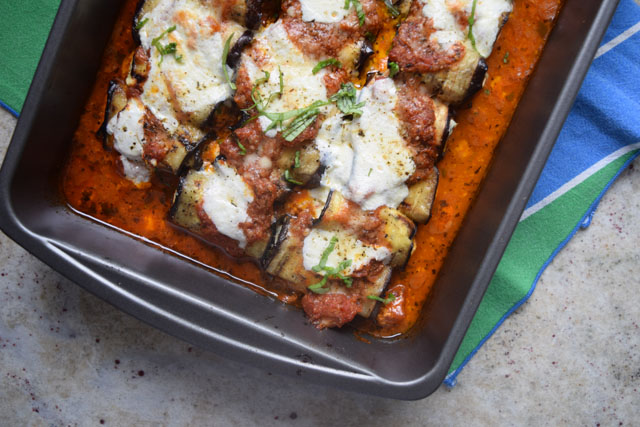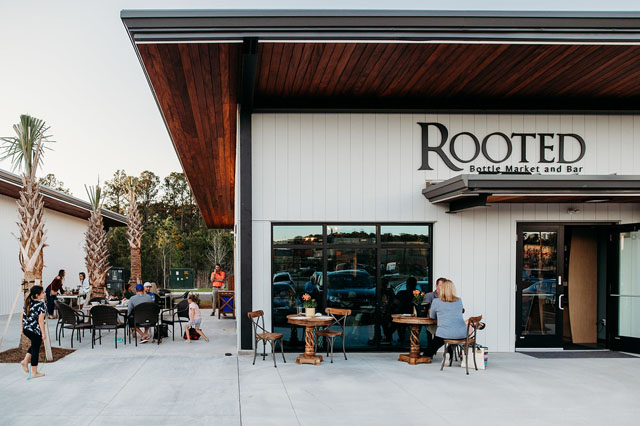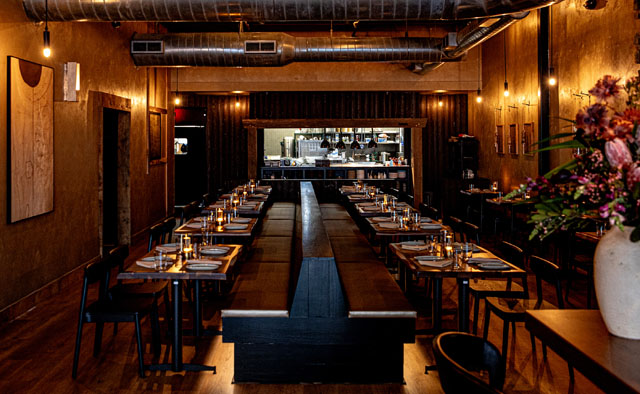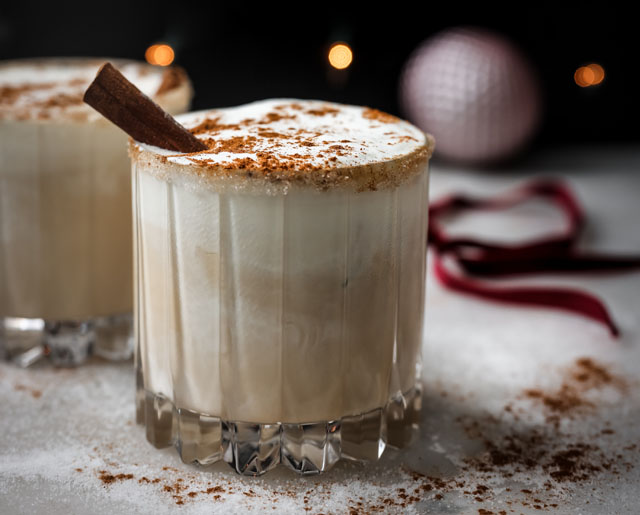Revival
23 Sep 2018
By WENDY SWAT SNYDER » Photos by JAMES STEFIUK
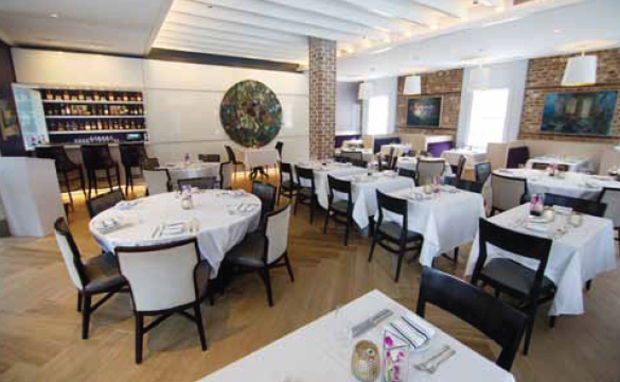
Curbside valet. Stunning space. Innovative menu. With a blend of Old World charm and cutting edge cachet, Revival set the tone for a memorable dining experience when it opened its doors in June. The Vendue's chic new restaurant reflects, like the top-rated boutique hotel itself, a commitment to preservation that is a longstanding Charleston hallmark. Located in the French Quarter at the intersection of East Bay Street and Vendue Range, Revival wows with a concept that celebrates local history and South Carolina's unique food culture.
“You see the juxtaposition of old and new throughout the hotel,” says general manager Pietro Giardini of the property, originally a string of warehouses that serviced the seaport trade in the 1700s. “We strive to create an ambiance composed of contemporary design elements, but deeply rooted in tradition.”
That approach is mirrored in the menu, says Revival executive chef Forrest Parker. A Culinary Institute of America alum, Parker's professional journey began, most notably, working under the tutelage of Charleston chefs Louis Osteen of Louis's and, later, Frank Lee of Slightly North of Broad. He is known for his work as an agricultural archaeologist, and was named a 2016 South Carolina Chef Ambassador for the Lowcountry by then-governor Nikki Haley.
“There's a great synergy between the dining space and the dishes we serve,” notes the Anderson, S.C. native. The modern interior, designed by LS3P, plays out against original, old Charleston brick walls. The Vendue owner Lisa Weitz selected the décor.
“For a guest to be able to reach out and touch something constructed in 1780 is special,” adds Parker. “We approach the cuisine the same way. We lighten traditional dishes and bring an element of modernity to them.”
Revival's opening was part of an ambitious expansion plan for The Vendue.
“As the hotel grew, we realized our lobby and restaurant had outgrown their spaces,” explains Giardini. “So we shuffled things around, closed the Drawing Room dining room and moved the restaurant into the corner location that had been our coffee shop, The Press.”
The newly imagined Revival dining room exudes a vibe of casual elegance. Original brick pops against a palette of crisp whites throughout the wide open space. Drum light fixtures and indirect spotlights in the beamed ceiling create a warm, inviting glow above white-cloth tables. A row of banquettes look out on East Bay Street through classic French doors that will be opened “once the weather is more cooperative.”
“When you set out to achieve a goal, it's a good feeling when you end up seeing that succeed,” notes Parker, pointing to the bright and airy feeling of the space. “Our architects were very successful in implementing our vision.”
Parker's vision for the restaurant's cuisine centers around “reviving” heirloom ingredients, thought to be extinct, by working with local farmers and reintroducing them in accessible dishes.
“Our approach to the menu was the same as the interior design,” explains Parker. “We wanted to move and explore within Lowcountry traditions—the menu becomes almost a discussion with our guests.”
The evening my guest and I visited Revival, we were advised by food and beverage director Erik Zanghirella to sample the eatery's “flagship drink,” Blushing Beauty—a refreshing mix of Tito's vodka, fresh watermelon, lemon, mint, and champagne. We were smitten.
“We aimed to revive the cocktail as a pre-dinner aperitif in accordance with a new modern mixology movement,” explains Zanghirella, adding that 80% of the menu's cocktails contain a sparkling element such as champagne, tonic water or prosecco to lighten up the structure of the drink “and bring out the aaahhh!”
“We use an array of seasonal and local ingredients and add a little bit of European flair,” he continues. “We try to keep the alcohol level below 10% in our drinks so a guest can enjoy a beverage without it interfering with all the delicate flavors the food menu has to offer.”
With palates refreshed, we went on to the must-have William Deas' she-crab soup. Our server expertly explained that Deas was the Charleston butler-turned-cook who famously embellished his bisque with a sprinkling of crab roe and sherry to impress President William Howard Taft. We, too, were impressed by the beautiful rendition: a richly flavored bisque that was light and silky in texture garnished with roe, Amontillado sherry and a huge bite of colossal lump crab.
The kitchen then sent out a refreshing hearts of palmetto salad that was big on flavors and textures: baby lettuces from Wadmalaw Island, S.C., charred palmetto pickle, avocado mousse, combined with a toasted benne seed vinaigrette, a preserved Meyer lemon puree and a salty garnish of dried black olives.
The recipe for lump crab cakes Remick came from the legendary Charleston restaurant Perdita's—where it had been presented as a gratin and contained no fillers, only crab meat. The tall, elegantly shaped cake was beautifully crusted and lightly drizzled with a piquant whole grain brandy mustard sauce.
The Lowcountry pirlou was an upgraded version of a Charleston stalwart, lavishly enhanced with butter-poached lobster as well as crab and shrimp, plated on a bed of toothsome Carolina Gold Rice “Pegao” with a black garlic aioli. Parker's kitchen sources product from local purveyors such as Anson Mills and Geechie Boy Mill. Seafood sources include Tarvin Seafood, Abundant Seafood and Tommy Edwards on Shem Creek in Mount Pleasant.
“We're really blessed to have these resources,” notes Parker. “And if we agree that Charleston is the number one tourist destination in the country, wouldn't guests who come here expect to experience something evocative of our history and terroir?”
Revival delivers—going beyond expectations by serving a fascinating story of food and place that speaks to all that is Charleston.
Revival
162 East Bay St, Charleston, SC
843-414-2335
revivalcharleston.com

